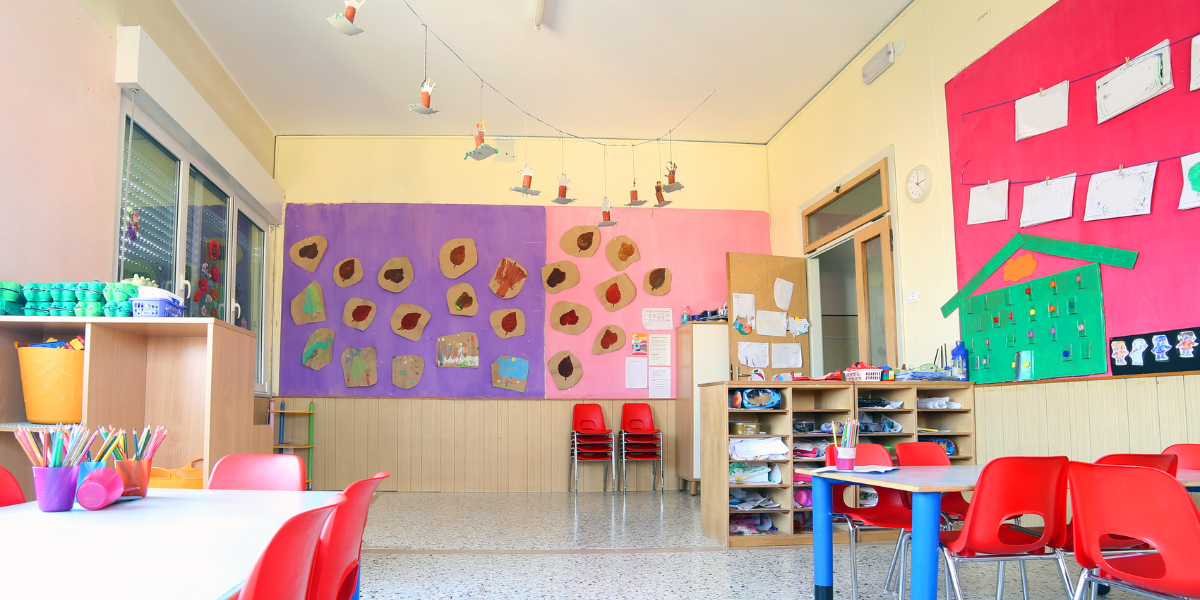“Spring Cleaning” Your Early Childhood Classroom
Posted by Sara Naff on Feb 26th 2024
Spring symbolizes renewal and growth, making it the perfect time for early childhood educators like you to rejuvenate their classrooms and lesson plans.
What a great time to explore innovative strategies to revamp learning spaces, integrate new teaching tools, and embrace professional development opportunities!

My team and I have developed some fresh ways to engage young learners and foster a dynamic educational environment this spring (and beyond!)
Refreshing the Classroom Environment
De-clutter and Organize
Start by eliminating clutter and organizing materials. Use colorful storage solutions and labels to keep everything in its place. Consider rearranging the furniture to create new learning zones—perhaps a cozy reading corner or a science exploration area. Whatever you do -- don’t overwhelm yourself. Take things one step at a time.
Where should you start? We have a list of easy (and budget-friendly) design changes you can make to your class or overall building.
You can also check out these online professional development courses: Building Up a Classroom, Advancing Your Classroom for Success, and Letting the Classroom Energy Flow.
Nature-Inspired Decor
Bring elements of nature into the classroom with plant-based projects or a small indoor garden. This can be a hands-on way to teach children about plant life cycles and responsibility.
Check out our tips for growing plants in your classroom (hint: it’s all about the pothos plant!). Or, when the weather is right, take your classroom outside!
Incorporating New Teaching Tools and Resources
Interactive Technology
Explore interactive whiteboards or tablets loaded with educational apps to introduce subjects in a fun, engaging way. Integrating technology into the classroom can provide valuable insights and strategies.
We recommend these STEM activities for early childhood educators that can walk you through ways to tack on some tech to your lesson plans.
Hands-On Learning Kits
Invest in or create your own learning kits for subjects like science, math, and literacy. Kits that include physical objects for counting, sorting, or experimenting can enhance understanding and retention.
Learning kits also help you connect curricula from the sciences, math, and other areas, creating fun play activities in the process.
Introducing New Lessons and Activities
STEM Projects
Embrace spring's theme of growth and renewal with STEM projects related to weather, plants, and animals. This could involve simple experiments, observations of nature, or construction projects using recycled materials.
Spring is the best time to teach kids about the sun, temperatures, and light. Children will notice many changes -- from the melting snow to the blooming flowers, all of which can be useful for activities themed around the natural world.
Art and Creativity
Use spring as inspiration for art projects. Encourage children to create art using natural materials or to paint and draw scenes from nature. Incorporating lessons on famous artists and art techniques can add depth to their creative exploration.
Pablo Picasso famously noted, “Every child is an artist.” This means that not only is it easy to add art activities to your class, your kids will welcome it.
Start easy by adding lessons on art with found items, then work your way to more open-ended experiences (and maybe even after school programs!).
Professional Development for Educators
Explore New Educational Strategies
We offer a range of online training courses with state verification designed to enhance teaching skills and classroom management.
Spring is an excellent time for childcare professionals to engage in professional development, exploring courses on child growth and development, health, safety, nutrition, and more.
Check out some of our more recent courses, such as Taming The Tiger: Helping Young Children Manage Big Emotions and Relationship Building: A Foundation for Powerful Workplace Communities.
Children with Special Needs
Consider taking courses on working with children with special needs to ensure an inclusive classroom environment.
Learning about different approaches and tools to support all learners can make a significant difference in their educational journey. A Child First! Understanding Special Needs is a great place to start.
To better understand the spectrum and the three main types of Autism Spectrum Disorder, look to Exploring the Spectrum: A Guide to Autism, Asperger's and Pervasive Development Disorder to learn about the qualification process for special education programming and IEP creation and implementation.
Engaging Families
Host workshops or informational sessions for parents and guardians to share insights into the new classroom activities and teaching methodologies. This can foster a stronger home-school connection and encourage parental involvement in their children's learning.
Now, I know what you are thinking: Some parents and caregivers can be rather, ahem, challenging to deal with. But the truth is, communicating isn’t always easy, but it always helps.
My colleagues and I developed this list of 10 ways to build strong communication with parents to provide you with some easy-to-implement ways to enhance your relationships with families.
Ready to Spring Into Something New?
Spring cleaning for the early childhood classroom goes beyond tidying up physical spaces—it's about refreshing teaching approaches, curriculum, and professional skills.
By exploring new lessons, incorporating innovative tools, and engaging in professional development, educators can provide their students with a vibrant and enriching learning experience.
Let this spring be a season of growth and renewal for both educators and students, as classrooms blossom into spaces of curiosity, creativity, and community.
Sara Naff is an early childhood education professional who has taught in the preschool classroom as well as adult learner environments. She is Director of Operations at AIR Childcare Training Solutions.

